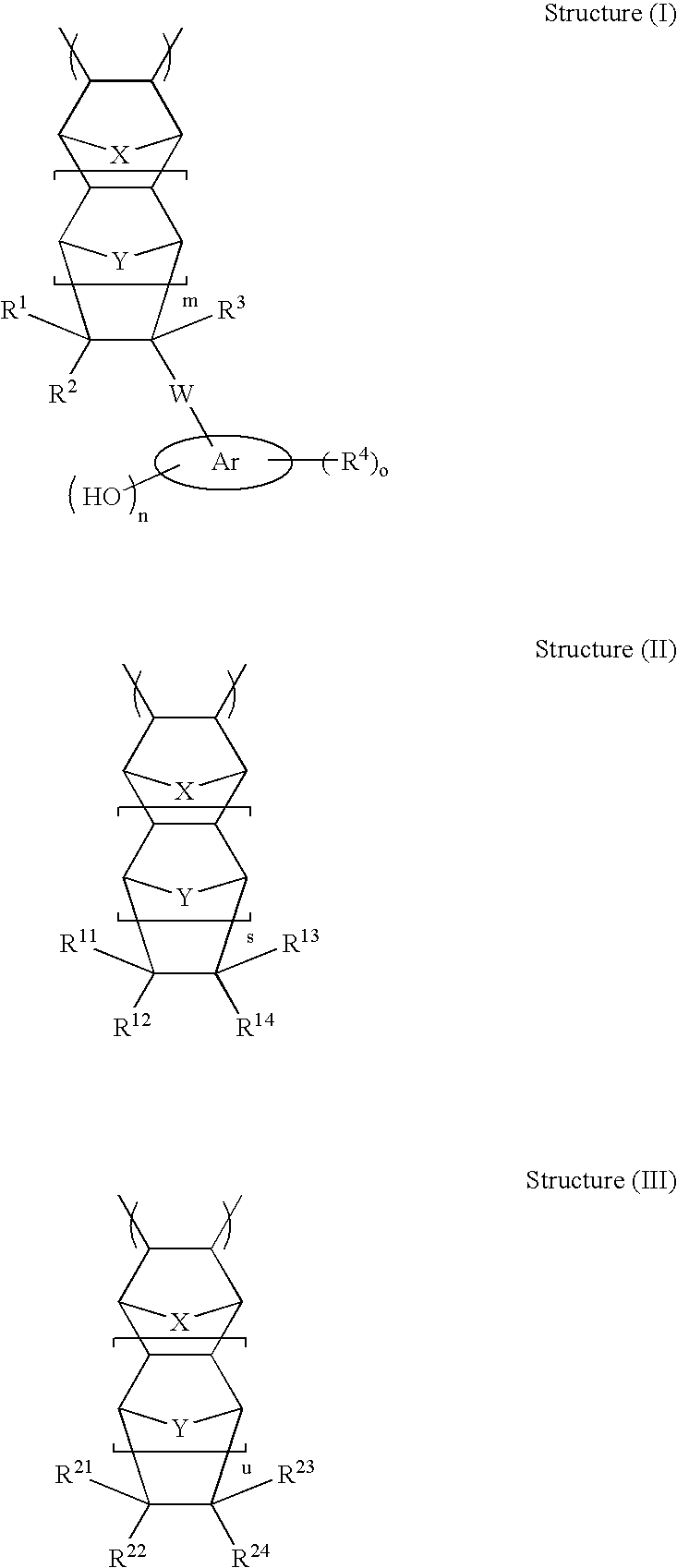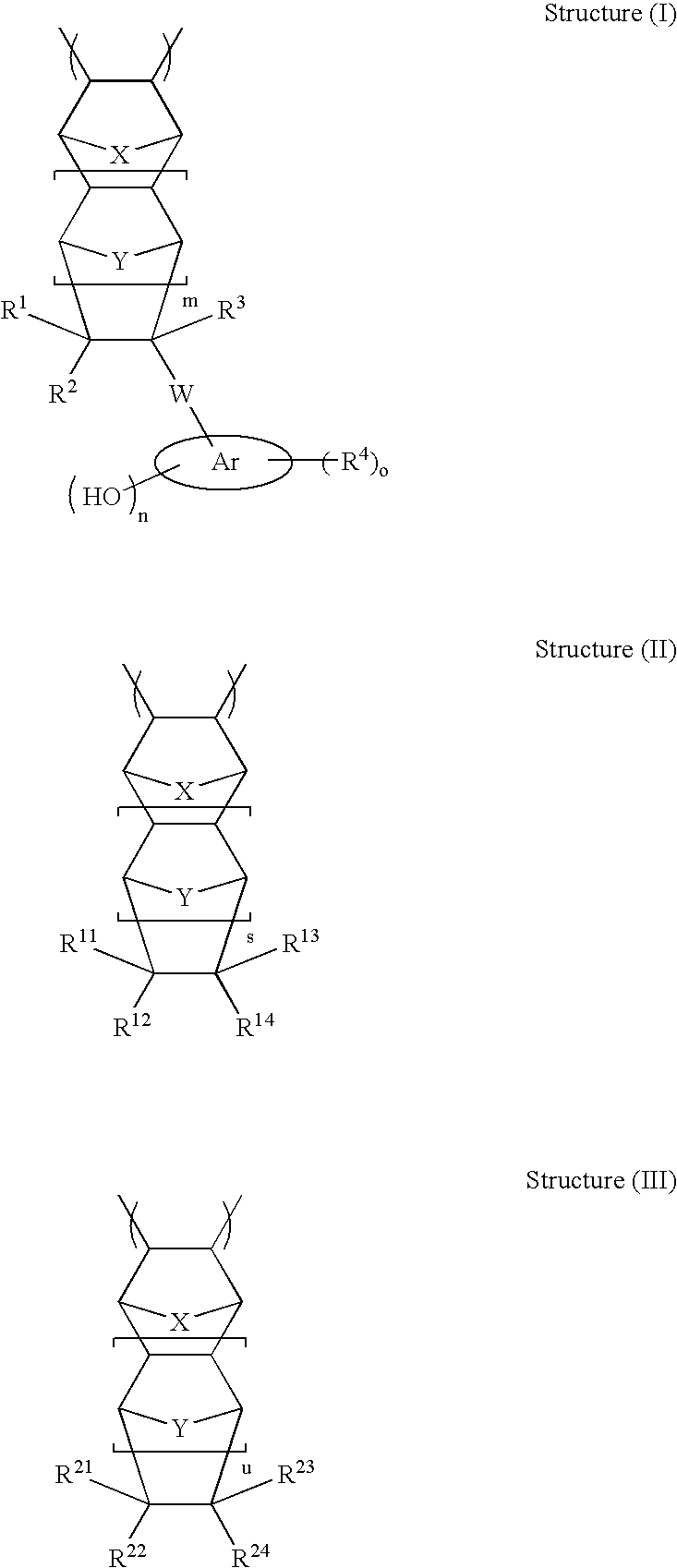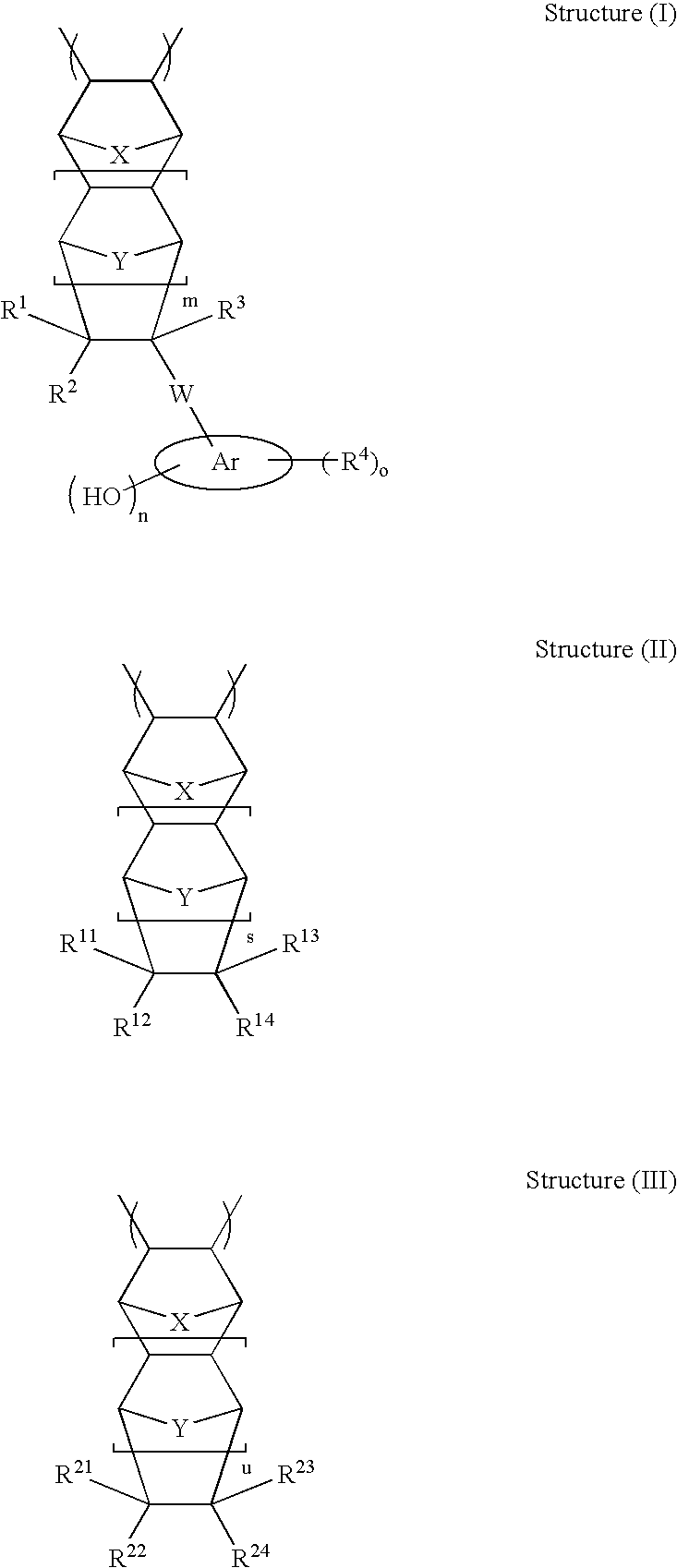High etch resistant underlayer compositions for multilayer lithographic processes
a composition and lithography technology, applied in the field of bilayer lithography, can solve the problems of increasing the selectivity of resists to etch conditions for pattern transfer, increasing the requirements of sensitivity, transparency, aesthetics of images produced, and increasing the difficulty of achieving the effect of excellent etch resistance and film forming properties
- Summary
- Abstract
- Description
- Claims
- Application Information
AI Technical Summary
Benefits of technology
Problems solved by technology
Method used
Image
Examples
synthesis example 1-15
[0193]Cycloolefin polymers P-1 to P-15, P-19 and P-20 were prepared according to the general procedure for complete methanolysis of cycloolefin polymers. The composition of the cycloolefin polymers and analytical data are presented in Table 1.
synthesis example 16-18
[0194]Cycloolefin polymers P-16 to P-18 were prepared according to the general procedure for partial methanolysis of cycloolefin polymers. The composition of the cycloolefin polymers and analytical data are presented in Table 1.
TABLE 1Composition and Analyticals of Cycloolefin polymerUnprotectedCycloolefinTGACycloolefinMolepolymer(5% WtpolymerCompositionRatio MWPDIloss)Tg (° C.)P-1NBPhOH-NBMeOH53 / 47102002.84350NDP-2NBPhOH-NBMeOH27 / 7380102.19——P-3NBPhOH-NBMeOH32 / 6859202.17——P-4NBPhOH-TDOH30 / 7033402.32——P-5NBPhOH-NBMeOH-30 / 28 / 4294802.15——HEANBP-6NBPhOH-NBMeOH-34 / 29 / 3797002.23——HEENBP-7NBPhOH-TDOH26 / 7491501.43350—P-8NBPhOH-TDOH26 / 74150001.48——P-9NBPhOH-NBMeOH47 / 5393202.64——P-10NBPhOH-NBMeOH46 / 5420601.96180P-11NBPhOH-TDOH26 / 7486001.49P-12NBPhOH-TDOH14 / 8685301.47——P-13NBPhOH / TDOH / TD25 / 15 / 60108602.0P-14NBPhOH / TDOH / TD25 / 35 / 4071301.6P-15NBPhOH / TDOH / TD25 / 55 / 2072501.6P-16NBPhOH-NBMeOAc27 / 7380102.19——P-17NBPhOH-NBMeOAc32 / 6859202.17——P-18NBPhOH-TDOAc30 / 7033402.32——P-19NBPhOH-TDOH25 / 7567401.41P-...
synthesis example 21-28
[0195]The general synthetic approach described in U.S. Pat. No. 6,232,417 (Example 1) is followed to prepare the base polymer before methanolysis. The reaction is allowed to run for 16 hours. The general methanolysis procedure is followed to remove the acetate groups. This yields polymers P-21 to P-28 (composition see Table 2)
TABLE 2Composition of Polymers P-21 to P28CycloolefineCompositionsMolePolymerStructure I TypeStructure II TypeRatioP-2130 / 70P-2230 / 70P-2330 / 70P-2430 / 70P-2530 / 70P-2630 / 70P-2730 / 70P-2830 / 70
PUM
| Property | Measurement | Unit |
|---|---|---|
| wavelength | aaaaa | aaaaa |
| wavelength | aaaaa | aaaaa |
| wavelength | aaaaa | aaaaa |
Abstract
Description
Claims
Application Information
 Login to View More
Login to View More - R&D Engineer
- R&D Manager
- IP Professional
- Industry Leading Data Capabilities
- Powerful AI technology
- Patent DNA Extraction
Browse by: Latest US Patents, China's latest patents, Technical Efficacy Thesaurus, Application Domain, Technology Topic, Popular Technical Reports.
© 2024 PatSnap. All rights reserved.Legal|Privacy policy|Modern Slavery Act Transparency Statement|Sitemap|About US| Contact US: help@patsnap.com










